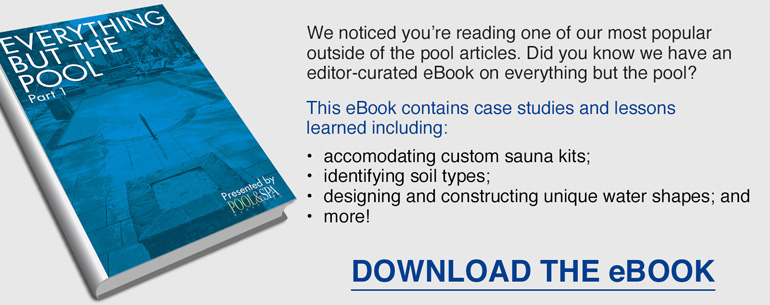
By Markus Winkler and Karen J. Williams
On the surface, natural swimming pools (NSPs) look like a natural garden pond; however, they are in fact much more. They are specifically designed so people can swim in clean, pure water without the use of any chemicals. A NSP or swim pond comprises two zones: a deep, central swimming area, and a shallow surrounding area, which encompasses various plants specifically chosen to filter the water.
NSPs originated in central Europe, specifically in Austria and Germany, more than 40 years ago with most still offering owners a unique bathing experience. In the last 20 years, an increasing number of people have become more health and environmentally conscious, seeking to provide a healthier environment for themselves and their families. Many may believe energy is the main concern for the next generation; however, water—one of the most precious resources—must also be preserved. By supporting the NSP concept, families can still enjoy a wonderful swimming experience, while at the same time being environmentally friendly.
The concept is different from a traditional swimming pool wherein water is lost via system flushing and seasonal drainage. NSPs, on the other hand, preserve, retain, and use as much natural water as possible. For example, the concept of rainwater harvesting can be used to top-up and fill a NSP.
A different type of swimming environment
Back in the ’80s, the idea of manufactured NSPs came from nature enthusiasts who were looking to create a chemical-free and biologically acceptable swimming environment. The first pools were more like garden ponds with clay bottoms and wooden barriers to separate the swimming and wetland areas.
More recently, however, the NSP market has developed in two directions: one for true nature enthusiasts who want an absolute pure, biologically sound body of water, wherein most of today’s modern water treatment technology is not used; and one for those who prefer a swim pond that uses biological water filtration combined with the use of environmental technology.
The latter has also been used in countless projects in the public authority sector for public and/or community pools as well as in hotels and resorts around the world.
The necessary technology is available, and with the proper training and coaching, there is no doubt this type of water body option will change the traditional swimming pool market as a whole.









7000 litres a minute?
That is 420,000 litres an hour, or over 100,000 gallons an hour.
Are you sure?
Hello Dubious –
Thank you for your comment. The text should have read: “approximately 7000 litres per hour (L/h) (1849 gallons per hour [gph])”
This has been updated.
Regards,
Jason Cramp
Editor
Pool & Spa Marketing
I’m interested in the Type 5 NSP pool type for a pool conversion. Do you know how many times the water is circulated in 24 hours and if the pump just runs for 8 hours a day or 24/7? Thanks
Could you tell me if I might be able to create a type 5 Pool with incorporating a plant zone with a mechanical filter and using an ionizer, ozonator and uv system to achieve sanitization and clarity? No clorine. I wish to not see algae.